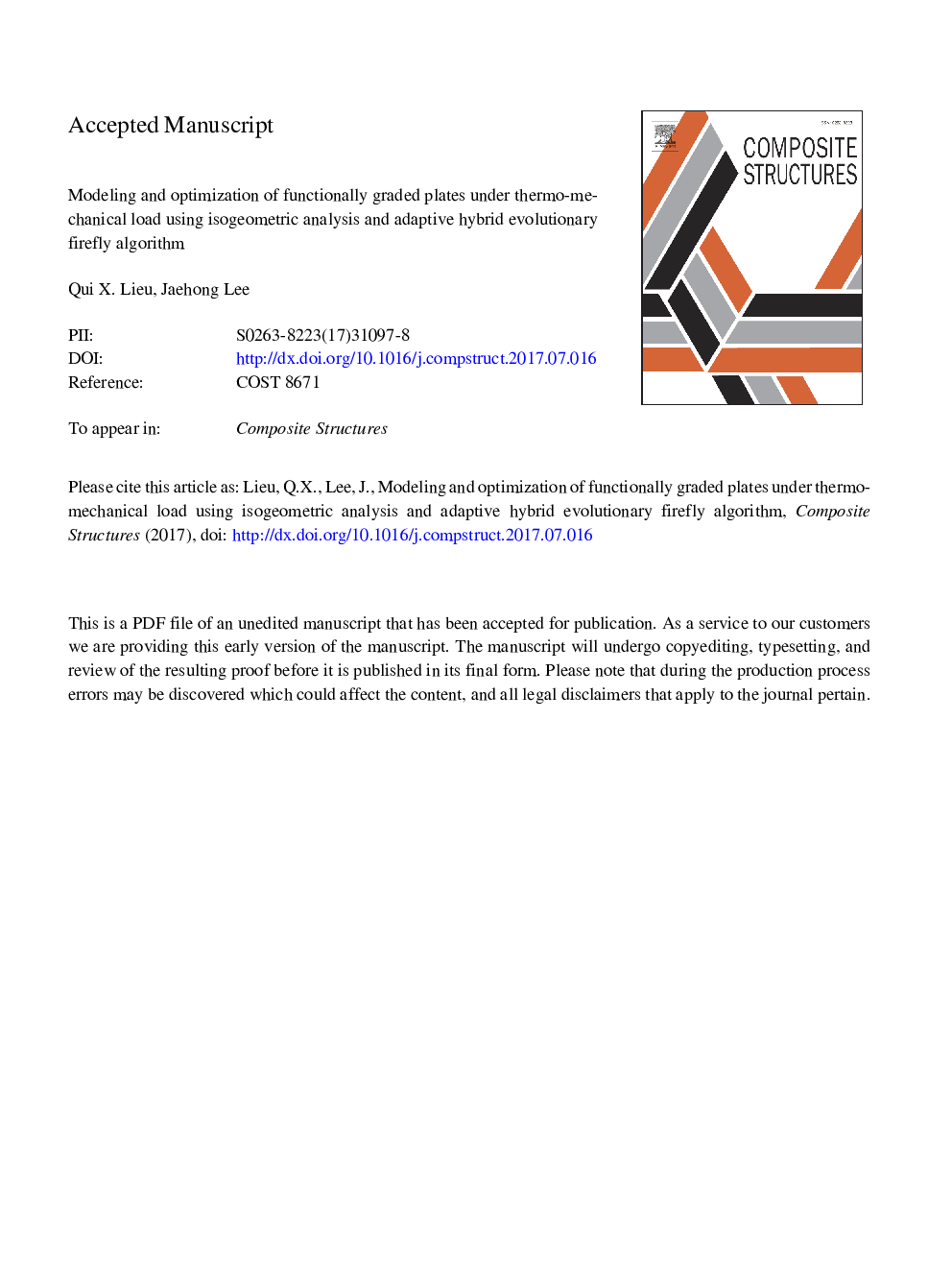| Article ID | Journal | Published Year | Pages | File Type |
|---|---|---|---|---|
| 4911851 | Composite Structures | 2017 | 40 Pages |
Abstract
The paper presents an effective numerical approach for modeling and optimizing the ceramic volume fraction distribution of functionally graded (FG) plates in the thermo-mechanical environment. Ceramic volume fraction design variables at control points whose coordinates are located along the plate thickness by Greville abscissae are used to describe the material distribution using the B-spline basis functions. Continuously altering macroscopic material properties can therefore be easily captured by selecting a proper order of these B-spline functions without any extra terms. The temperature-dependent material properties are then evaluated by either the rule of mixture or the Mori-Tanaka scheme. A non-uniform rational B-splines (NURBS)-based isogeometric finite element model associated with the third-order shear deformation theory (TSDT) is utilized for the static analysis of the FG plates. A recently proposed adaptive hybrid evolutionary firefly algorithm (AHEFA) is employed to solve compliance minimization problems with volume constraints. This algorithm effectively enhances the trade-off between the global and local search abilities, the solution accuracy and the convergence speed are thus improved dramatically. Several numerical examples are examined to confirm the effectiveness and robustness of the present method.
Keywords
Related Topics
Physical Sciences and Engineering
Engineering
Civil and Structural Engineering
Authors
Qui X. Lieu, Jaehong Lee,
